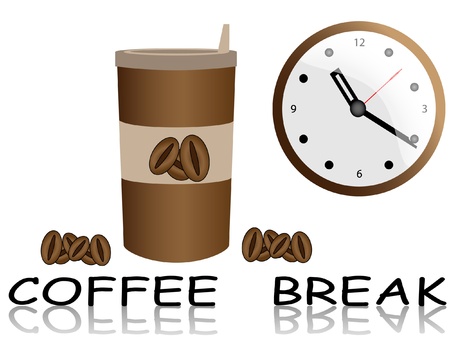The Dawning of Inspiration: Mornings in British Creative Circles
There is a peculiar magic in the early morning light that drapes itself across Britain’s patchwork cities and quiet countryside, summoning a gentle hush before the world truly stirs. For artists and writers nestled in London’s sun-dappled terraced flats or tucked away behind frosted panes along Edinburgh’s winding cobbled lanes, dawn is more than a beginning—it’s a ritual, an almost sacred interval where potential hangs thick as mist. The day’s first cup of coffee becomes the linchpin of this delicate hour, swirling with both aroma and anticipation. In these moments, creative minds gather their thoughts as the kettle whistles—a familiar overture echoing through Victorian kitchens and contemporary studio spaces alike. It’s here, at the edge of wakefulness, that inspiration often strikes: stories unfurl in notebooks, sketches emerge on battered tables, and ideas percolate just as steadily as the dark brew in their favourite mug. The British morning routine—marked by a blend of sleepy tradition and restless curiosity—sets the perfect stage for artistry to take root, inviting creators to greet the day with both caffeine and imagination.
A Cup and a Canvas: Coffee’s Steady Rise in British Artistic Life
There’s an undeniable romance to the journey of coffee through Britain’s creative history. Once merely an exotic curiosity sipped by intellectuals and merchants in the 17th century, coffee has evolved into a daily ritual for modern artists and writers across the UK. This transformation mirrors the changing face of British creativity itself—from candlelit gatherings in smoky coffee houses to sun-dappled mornings spent in artisan cafés, pen poised or paintbrush ready.
The earliest British coffee houses, such as Oxford’s Queen’s Lane Coffee House (opened in 1654), quickly became fertile ground for conversation and collaboration. Writers, painters, philosophers, and pamphleteers would gather amidst the clatter of porcelain cups to trade ideas and cultivate inspiration. Over time, these spaces established themselves not merely as purveyors of caffeine, but as vital social engines powering artistic innovation.
In the Victorian era, coffee’s reputation as a sober alternative to ale only strengthened its association with clarity and productivity—qualities prized by poets sketching verses on rain-splattered window ledges or painters capturing the city’s shifting light. The tables below capture this journey:
| Era | Coffee Venue | Creative Impact |
|---|---|---|
| 17th Century | Coffee Houses (e.g., Lloyd’s) | Intellectual exchange; early literary societies |
| Victorian Era | Temperance Cafés | Sober reflection; rise of periodicals and art journals |
| Modern Day | Artisan Cafés & Co-working Spaces | Community building; collaborative projects; digital creativity |
Today, the British creative scene is inseparable from its café culture. From Edinburgh’s cobbled closes to Bristol’s repurposed warehouses, contemporary artists and writers find their muses over flat whites and cortados. Each cup poured is a silent invitation—a chance to connect with centuries of creative minds who found both comfort and courage at the bottom of a ceramic mug.

3. Creative Rituals: How British Artists and Writers Take Their Coffee
In the gentle hush of an English morning, creative souls reach for their coffee with a reverence reserved for sacred ritual. Unlike the hurried American drip or the dramatic Italian espresso, the British approach is steeped in its own quiet idiosyncrasies. For many artists and writers, the day begins with the slow bloom of grounds in a French press—or, as it’s affectionately known here, the cafetière. The measured plunge, the anticipation as steam curls above a well-thumbed notebook—these are not just actions but acts of intention, marking the start of something new. Others find inspiration in less polished corners: the classic greasy spoon café, where mugs of builder’s coffee are served strong enough to jolt even the sleepiest muse awake. Here, between clinking teaspoons and laminated menus, ideas percolate as freely as conversation. Whether it’s a solitary moment with a hand-thrown mug in a Camden flat or a bustling café table overlooking Manchester rain, British creatives have made coffee their companion in both ritual and rebellion. These small ceremonies—choosing beans from a local roaster, debating oat milk versus dairy, savouring that first sip before pen meets paper—are more than habits; they are signposts guiding the mind towards invention. In every cup lies a little promise: today might just be the day when inspiration stirs.
4. From Local Cafés to Home Studios: Finding Spaces for Inspiration
The British creative spirit is inseparable from the spaces it inhabits, whether that’s a bustling café in Soho or a secluded garden in Kent. Across the country, artists and writers find their muses in places where coffee and culture intertwine, each spot offering its own blend of atmosphere and inspiration. Wandering through these neighbourhood haunts reveals a tapestry of stories brewing alongside cups of coffee—a ritual as cherished as the art it fuels.
The Urban Pulse: Cafés as Creative Hubs
Step into any London café and you’ll find a mosaic of characters—freelancers hunched over laptops, poets sketching lines on napkins, painters gazing out rain-speckled windows. These venues offer more than just caffeine; they hum with energy, inviting patrons to eavesdrop on conversations or lose themselves in their work amid the city’s gentle din. Soho’s independent coffee shops, for instance, have long been sanctuaries for the creatively inclined, nurturing ideas over flat whites and espressos.
Comparing Spaces of Inspiration
| Location | Atmosphere | Creative Output |
|---|---|---|
| Soho Café | Bustling, communal, eclectic | Collaborative writing, urban sketches |
| Kentish Garden | Quiet, natural, contemplative | Reflective poetry, landscape painting |
| Edinburgh Bookshop Café | Literate, cosy, nostalgic | Literary essays, character studies |
| Bristol Studio Flat | Personalised, intimate, experimental | Mixed media art, journaling |
Countryside Calm: The Solitude of Home Studios
Yet inspiration doesn’t always demand the hum of city life. Many British creatives retreat to home studios or gardens—spaces steeped in solitude and birdsong. In places like rural Kent or the Yorkshire Dales, the morning ritual of brewing coffee becomes a silent ceremony that sharpens focus and stirs imagination. Here, creativity grows quietly among wildflowers and hedgerows, words spilling onto pages as sunlight creeps across the desk.
Neighbourhood Rituals: Coffee as a Common Thread
No matter where they create—from corner cafés to sunlit sheds—British artists and writers are united by their morning cup. It’s more than sustenance; it’s an invitation to observe, reflect, and begin anew each day. As we wander through these diverse spaces—urban and rural—we glimpse how local culture and daily rituals fuel the nation’s artistic heart.
5. Coffee as a Muse: Stories from Contemporary British Creators
The gentle clink of ceramic mugs and the faint aroma of freshly ground beans have become a kind of morning ritual for many British creatives, quietly weaving themselves into the fabric of inspiration. For novelist Imogen Hartley, her local café in Bristol is more than just a pit stop; it’s where her characters come alive, swirling in the steam above her flat white. “There’s something about that first sip,” she muses, “that coaxes my thoughts out of hiding and onto the page.” Across the cityscape in Manchester, painter Rory Campbell describes his studio mornings as incomplete without the hum of his moka pot on the hob—a prelude to splashes of colour and bold brushstrokes. He credits his strongest ideas to those solitary moments over coffee, when daydreams drift between reality and canvas.
Meanwhile, spoken word poet Zainab Farooq finds her muse in the communal buzz of London’s indie cafés. “It’s not just the caffeine,” she laughs, “it’s overhearing snippets of strangers’ conversations that spark new verses.” For these creators, coffee is less about routine and more about ritual—a gentle awakening that bridges sleep and imagination. The stories shared by these artists echo through urban mornings across Britain, revealing how a humble cup can become a quiet catalyst for daring drafts and uncharted ideas. Whether nestled in a Soho nook or perched by Edinburgh’s rain-speckled windows, British writers and artists continue to find magic in their morning brew—each cup an invitation to wander through realms of possibility.
6. The New British Blend: How Coffee Culture Shapes Tomorrow’s Creatives
As the city wakes and the first espresso machines hiss to life, the UK’s creative landscape is quietly undergoing a transformation—one cup at a time. Today, coffee is no longer just a morning ritual or a caffeine fix; it’s a cultural catalyst, blending tradition with innovation and fuelling the visions of tomorrow’s artists and writers.
Independent Roasters: Crafting Identity in Every Cup
Across Britain, from Shoreditch to Edinburgh, independent roasters are carving out spaces that feel both distinctly local and globally inspired. These artisan coffee shops have become more than venues for a flat white—they’re incubators of creativity, where the hum of conversation mingles with the aroma of single-origin beans. Here, every cup tells a story, inviting creatives to linger, sketch, jot down ideas, or simply watch the world drift by through rain-spattered windows.
Sustainability as Inspiration
The new wave of British coffee culture isn’t just about taste—it’s about ethics. Sustainability has become an unspoken muse for many artists and writers who frequent these cafés. The provenance of beans, fair trade practices, and eco-conscious packaging aren’t just buzzwords; they’re threads woven into the fabric of the creative process. This mindful approach echoes in poetry scribbled on recycled napkins or illustrations inspired by the journey from farm to cup.
Communal Spaces: The Modern Creative Commons
Perhaps most profound is how communal coffee spaces are dissolving boundaries between disciplines and generations. Open-plan layouts, shared tables, and impromptu events foster serendipitous encounters—a novelist meets an illustrator over oat milk lattes; a designer finds their muse in overheard dialogue. Such meeting grounds echo the salons of Bloomsbury past but are infused with today’s inclusive spirit—inviting all dreamers, thinkers, and makers to shape the next chapter of British culture together.
Looking ahead, as independent roasters champion sustainability and cafés morph into creative sanctuaries, coffee will continue to shape not just our mornings but the very essence of British artistry. In this evolving relationship between coffee and creativity, each sip holds the promise of fresh ideas and bold new blends—brewing a future as rich and complex as the nation itself.


